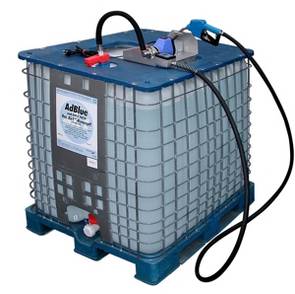
AdBlue
 AdBlue® is a 32,5% aqueous urea solution made from technically pure urea and demineralized water. The name of the solution can also be AUS 32, which is an abbreviation for Urea Aqueous Solution. It is a colorless transparent liquid with a faint ammonia odor. The solution does not have toxic properties, does not have an aggressive effect on the human body. It is non-flammable and is not classified as a hazardous substance for transport.
AdBlue® is a 32,5% aqueous urea solution made from technically pure urea and demineralized water. The name of the solution can also be AUS 32, which is an abbreviation for Urea Aqueous Solution. It is a colorless transparent liquid with a faint ammonia odor. The solution does not have toxic properties, does not have an aggressive effect on the human body. It is non-flammable and is not classified as a hazardous substance for transport.
AdBlue® is a NOx reductant required for the use of Selective Reduction (SCR) catalysts in diesel vehicles. This solution is introduced into the catalyst, where, after injection into the hot flue gases, the contained urea is decomposed into carbon dioxide (CO2) ammonia (NH3).
water, warm
urea → CO2 + 2NH3
Ammonia then reacts with nitrogen oxides (NOX) that occur during the combustion of diesel fuel. As a result of a chemical reaction, harmless nitrogen and water vapor is released from the exhaust gases. This process is called selective catalytic reduction (SCR).
NO + NO2 + 2NH3 → 2n2 + 3H2O
Since the initial crystallization temperature is -11°C, below this temperature the AdBlue additive solidifies. After repeated defrosting, it can be used without restrictions. The density of AdBlue at 20 C is 1087 – 1093 kg/m3. Dosing of AdBlue, which is stored in a separate tank, takes place in the car fully automatically in accordance with the requirements of the control unit. In the case of the Euro 4 level, the amount of AdBlue added corresponds to approximately 3-4% of the amount of fuel consumed, for the Euro 5 emission level it is already 5-7%. Ad Blue® reduces diesel consumption in some cases by up to 7%, thereby partially offsetting the higher costs of purchasing vehicles that meet the requirements of EURO 4 and EURO 5.